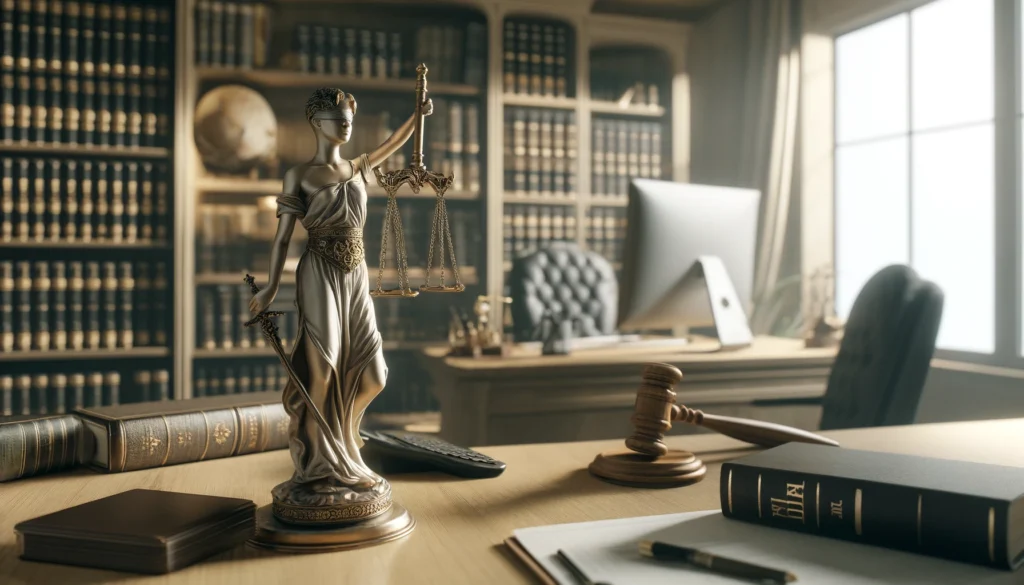
Setting the Stage: The New Wave of Legal Research
The legal profession is witnessing a transformative shift with the advent of artificial intelligence (AI). Notably, technologies like ChatGPT are redefining how legal research and case preparations are conducted. In this context, understanding the functionalities of ChatGPT can unlock potential efficiency gains.
ChatGPT, a sophisticated natural language processing tool developed by OpenAI, demonstrates a remarkable capability to assist legal professionals. From drafting documents to generating relevant case law summaries, its applications in the legal field are expansive and growing.
This article delves into how legal practitioners can harness ChatGPT for various aspects of criminal trials, including research, drafting, and trial preparation.
Harnessing the Power: Understanding ChatGPT’s Functions
As we delve deeper, it becomes essential to comprehend the multifaceted roles ChatGPT can play in legal tasks. Lawyers can leverage ChatGPT not just for menial tasks, but also for complex operations that demand a blend of precision and expertise.
ChatGPT can assist significantly in legal research by quickly scanning through vast legal databases to retrieve pertinent information. For drafting, it can produce initial drafts of legal documents, summations, and even refine these drafts based on user feedback—providing a solid foundation upon which legal professionals can build.
Specific Applications Relevant to Criminal Trials
- Information Retrieval: Locating statutes, case laws, and precedents relevant to a case.
- Summation Drafting: Crafting closing arguments with logical coherence and legal soundness.
- Reviewing and Refining Arguments: Providing alternative perspectives and refining existing drafts based on legal standards.
Next, we delve into the intricacies of crafting effective prompts to maximize the utility offered by ChatGPT.
Also read:
Crafting the Perfect Prompt: The Art of Instructing ChatGPT
The efficacy of ChatGPT largely hinges on how well prompts are crafted. Think of ChatGPT as an intern who follows instructions precisely; the quality of output is directly proportional to the clarity and specificity of instructions.
Detailed Guide on How to Frame Effective Prompts
- Be Specific: Provide clear, detailed instructions. Instead of “Find case laws on theft,” try “Retrieve case laws relating to theft under Section 378 of the Indian Penal Code, decided after 2015.”
- Contextual Cues: Give context where necessary. For example, “Draft a legal memorandum arguing the unconstitutionality of a statute due to its vagueness.”
- Iterative Feedback: Refine the query based on the responses received. A good iterative prompt could be, “Revise the draft summation focusing on case law from the 9th Circuit.”
Examples of Nuanced Prompts for Various Stages of Trial Preparation
Let’s break down how these principles can be applied at different stages:
- Information Retrieval: “Generate a list of legal precedents where unauthorized entry was ruled as justified self-defense.”
- Summation Drafting: “Compose an opening paragraph for a closing argument in a theft case, focusing on the lack of incriminating evidence.”
- Reviewing and Refining Arguments: “Assess the robustness of these three arguments for our defense in a DUI case and suggest improvements based on recent case law.”
Understanding these fundamentals is crucial when aiming for speed and accuracy in legal research and trial preparation.
Also read:
Speed and Accuracy: Streamlining Information Gathering
Time is often of the essence in legal practice, particularly in managing voluminous data. ChatGPT can drastically reduce the time spent on information gathering while maintaining accuracy.
Techniques to Quickly Obtain Reliable Information
- Precise Query Framing: Specify the jurisdiction and timeframe to get relevant case laws and statutes, e.g., “Federal court rulings on search and seizure from New York in 2019.”
- Metadata Utilization: Use metadata to pinpoint relevant documents quickly, such as “Highlight cases citing Miranda v. Arizona for custodial interrogations.”
Leveraging ChatGPT for Fact-Checking and Citation
ChatGPT can cross-reference facts from multiple sources to ensure their veracity. For instance, framing a query like, “Verify the accuracy of the citation from People v. Smith, 2020,” enables prompt fact-checking.
With the foundations of efficient information gathering in place, the next focus shifts to drafting compelling summations.
Also read:
Drafting Masterpieces: Creating Persuasive Summations
The summation often proves to be the crescendo of a criminal trial, where compelling arguments can level the playing field. ChatGPT offers invaluable assistance in drafting these persuasive pieces.
Step-by-Step Process for Using ChatGPT to Draft Summations
- Initial Draft: Start with a broad prompt like, “Draft a closing argument for a criminal trial involving theft, focusing on the accused’s clean record and lack of evidence.”
- Content Refinement: Use iterative feedback to refine the initial draft by stating, “Emphasize the inconsistencies in witness testimonies in the provided summation.”
- Final Review: Request a legal soundness review, “Ensure the summation aligns with recent rulings in similar cases from our jurisdiction.”
Ensuring Coherence and Legal Soundness in the Generated Text
Always cross-reference the generated content with actual legal documents to maintain the integrity of arguments. Phrasing queries such as, “Compare this draft with the standard procedure for closing arguments in criminal trials,” ensures alignment with legal standards.
Iterative Refinement with ChatGPT
Engage in iterative refining by incorporating suggestions or changes incrementally. For instance, “Add a paragraph explaining the lack of motive for the accused” can fine-tune the summation to its final form.
Let’s now consider the ethical dimensions and boundaries of using AI technologies in legal practice.
Also read:
Ethical Considerations and Limitations: Using AI Responsibly
While AI opens innumerable possibilities, it comes with ethical constraints. Legal practitioners must remember that AI should supplement, not replace, human oversight and expertise.
Areas Requiring Caution
- Client Confidentiality: Ensure no sensitive client information is exposed to AI systems.
- Legal Accountability: AI outputs should be reviewed by legal professionals to prevent errors.
Understanding AI’s Limits
AI is a tool that excels in data analysis and draft creation but lacks the nuanced judgment of an experienced lawyer. It must, therefore, be used as part of a broader strategy incorporating professional legal insight.
Finally, let’s explore how to seamlessly integrate AI technologies like ChatGPT into daily legal workflows.
Also read:
Final Thoughts: Integrating AI into Your Workflow
Incorporating ChatGPT into your legal workflow should be a gradual and calculated process. Start by utilizing it for research and drafting tasks, and gradually expand its use based on experiential learning and comfort level.
Summing up, by leveraging ChatGPT responsibly and effectively, legal professionals can achieve heightened efficiency and precision in their practice. Explore its capabilities and integrate it incrementally for maximum benefit.


